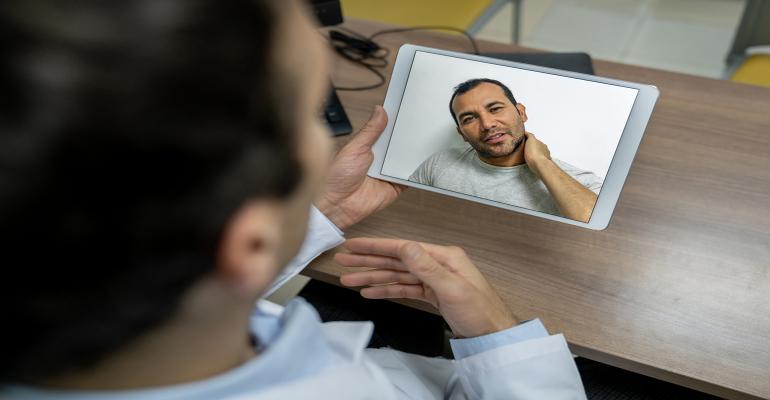As government authorities instituted stay-at-home orders during the COVID-19 lockdown last year, millions of patients had to stay away from their physicians to stay safe. This pandemic pressure accelerated the increased digitisation of the healthcare industry, especially the use of telehealth services.
Since April last year, hospitals and clinic call centres across the UAE have been flooded with patient queries. In September, for example, the Abu Dhabi Telemedicine Centre (ADTC) revealed a 2,000 per cent rise in the number of calls received since the start of the pandemic. As a result, healthcare providers have been ramping up their telehealth and telehealth capabilities.
However, new ways to deliver health care can face some hesitancy from some patients and doctors, and fully adapting a national health care system to new technologies and processes brings new challenges. Questions about the costs, administration and related coding and billing needed to be understood.
“Even before COVID-19, there was some hesitancy adopting telehealth services in the region,” said Dr Osama Elhassan, co-founder and the vice-chair of Emirates Health Informatics Society and Health Informatics Specialist at Dubai Health Authority. “We had to get the right digital frameworks in place so that we can ensure the quality of telehealth platforms, the flow of reimbursement processes, and also address privacy and security when using those platforms.”
To help overcome these challenges, the American Medical Association (AMA) aligned Current Procedural Terminology (CPT®), a unique medical terminology that describes services and procedures used to care for patients, to support the delivery of procedures across care settings. The CPT code set currently includes 70 telehealth-related codes and content describing comprehensive telehealth delivery solutions to support clinical interoperability and reimbursement for these remote care services.
The CPT Editorial Panel enlists physicians and engages with clinical innovators to update the code set to reflect the latest medical care available to patients. CPT codes have been adopted in Dubai, Abu Dhabi, and elsewhere across the Gulf region to help drive digital health solutions and enable coordinated care critical during a pandemic.
“Standardized CPT codes that reflect the emerging types of telehealth services improves confidence in the data quality and management process. The CPT code set has advanced quickly to ensure that hospitals, health care workers, and health authorities can coordinate, analyze, and improve care for patients in the midst of an acute health crisis,” said Dean Parisi, the AMA’s Director for International. “The AMA convenes experts and invests a significant amount into an editorial process ensuring that the CPT content is continuously modernized to remain clinically relevant in today’s rapidly evolving healthcare delivery systems.”

While the delivery of telemedicine has expanded rapidly to create a safer care environment during a pandemic, it also is positioned now as a crucial tool for delivering care.
“This pandemic period has helped to identify areas where telehealth can be extremely useful in delivering care, such as the ICU, stroke, and radiology,” Dr. Elhassan explained. “Telemedicine delivery will be more crucial in providing value, both in terms of quality and cost effectiveness, to healthcare systems. By learning from each other in the region, we have been able to understand the strengths and the limits of telehealth. In Dubai, our comprehensive regulatory approach allowed us to implement telehealth quickly as it became instrumental to the healthcare system.”
“It is vital that this momentum from telemedicine can continue to improve outcomes, deliver cost savings and better access to health care systems,” said Mr. Parisi. “The CPT code set helps health authorities and providers in the region as they drive this transformation to adopt more virtual care capabilities.


